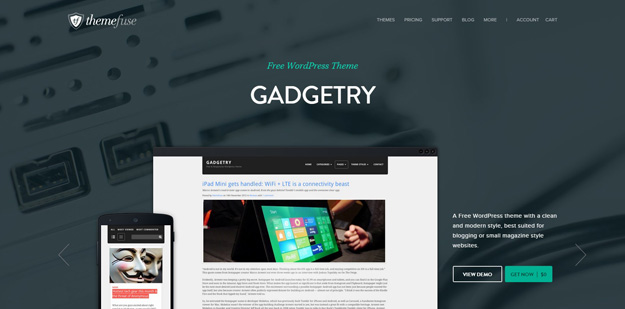It would be best to make many decisions to create the perfect WordPress website, from implementing it to optimizing it. Although the process is different for everyone, finding a suitable WordPress theme is a universal task.
According to visitors, your theme is your website – it’s what they see, communicate, and remember. The appearance of your website affects not only how people see your online status, your products but your brand as a whole. Simply put, your theme should work well according to your business needs. For example, suppose you have an online store.
In that case, your theme will indeed support essential plugins, let’s say WooCommerce plugins, which is very effective in providing a detailed view of the products.
Anyone can create a WordPress theme, and after some research, it seems like everyone has it. Thousands and thousands of themes are spread across dozens of markets, from programmers, individual programmers to adult organizations. In addition, every quality control is yours.
To make the research a little easier, we will discuss five important things to know when choosing a WordPress theme in 2021.
1. Strive for Simplicity
Lots of WordPress themes have lots of colors, complex layouts, vivid animation, and so on. Sometimes you might need these things, but you don’t need them all of the most of the time. Simplicity is the biggest challenge. Find a theme with a project layout that will help you achieve your goal. It should look good, but without sacrificing usability.
Make sure that the presentation style of the theme is not too complicated. The purpose of web design is to help users find the information they need and to help website owners achieve their goals. If a theme looks good but doesn’t help you find new businesses or followers, it’s not a good theme. It’s also not a good theme if your users are browsing your site.
2. Compatibility with plugins
An add-on is a program that you install on your website to give it an additional function. For example, I have a Fluent Forms plugin that allows me to add contact forms to my website so that potential customers can message me. In addition, you can use plugins to create membership pages, add photo galleries, speed up your website, and much more.
The most prevalent themes should have no problems with a compatible plugin. If you need a specific plugin for your site – say WooCommerce – you can visit the theme’s website and check its features to see if it fits. If you can’t find information on how to do this, search the support forum or contact the developer.
If you’re looking for people who mention issues with a particular plugin when browsing the forum, be sure to check out the plugin’s reviews. This is because compatibility issues can be caused by a poorly written plugin, which may not be a problem. If you see bad plugins and many complaints about compatibility with different themes, the problem may be with the plugin and not the theme you are trying to use.
An excellent way to reduce the risk of compatibility issues is to choose a design that is not marketed as an all-in-one. Such projects try to do everything themselves and may not work as expected if you try to add something else. And even if they do work, they may not work as well as a special add-on.
3. Responsiveness
Responsive design means that the site is straightforward to use – not just on your laptop but on many devices. This means that it is compatible with your mobile phone and has menus and other easy-to-navigate widgets. In addition, look for features like smooth web and flexible images that can be translated on non-desktops.
An example of a responsive design would be a design that can be easily translated to a mobile device without interruption. Let’s say you chose a theme that you like, but it doesn’t respond the way you want. We need to adjust it a bit.
4. Lightweight & Customizable
Your theme is an integral part of the foundation of your website and, as such, has a significant impact on your website’s performance and page time. In addition, your website loading speed matters, from user experience to SEO and conversion speed, so it cannot be ignored.
So how do you know if an object is light? You can also do the tests yourself by doing a testing tool like GTmetrix. If you’re looking for a free theme, install it on a test site. Then run it with GTmetrix and see how it works.
For a premium theme, you can do the same with a public demo version. This is not an ideal method as the theme developer may load some of the tracking scripts that are not part of your website but should give you a good idea of tweaking your theme.
If you’re lucky, you may find a theme that looks instantly wholly pixelated. However, the possibilities are pretty slight, and you probably want to set things up so that they are your own. If this sounds like you, you need a theme that easily allows you to make these changes without special technical knowledge.
In particular, you need a theme that uses a WordPress plugin. This is a crucial WordPress feature that allows you to customize various aspects of the look and feel of your theme through a beginner-friendly interface and live website preview.
5. Updates and Customer Support
In addition to new features, security fixes, bugs, and performance improvements. You need a permanent item. These descriptions include the Recently Updated attribute, which is a good indicator of whether a theme is constantly being updated. If the theme has been updated in recent months, please continue. Every update older than six months promises less and avoids themes that haven’t been updated in two or more years.
Most paid WordPress themes have at least a couple of months of excellent customer support. When it expires, you have the option of renewing it monthly or annually. If you see future benefits, consider the cost of recurring support when choosing a theme.
Keep in mind that free themes rarely offer the same support features as additional themes. Therefore, if you have significant problems yourself, you should include detailed installation instructions and support resources for your chosen theme.




